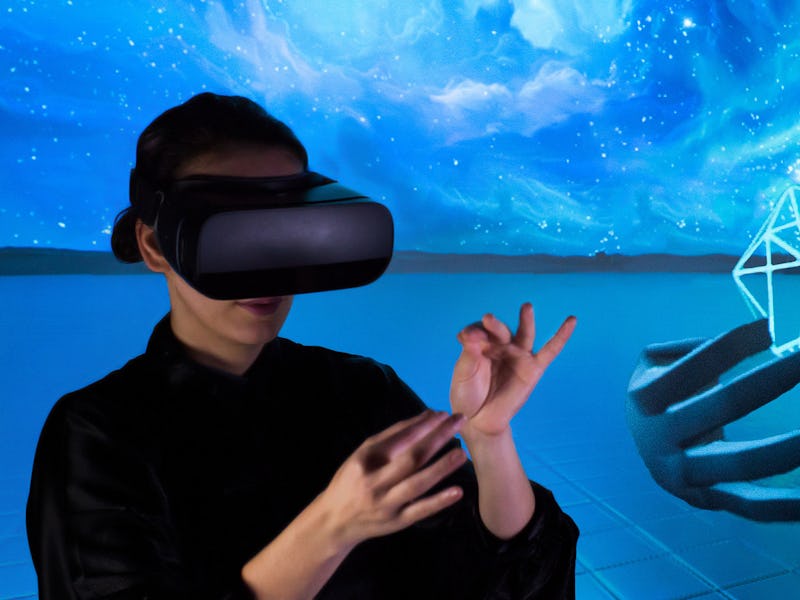Leap Motion Lets You Use Your Hands in Mobile VR
Bringing the "real" to virtual reality.

VR has an input problem. Companies have tried using game controllers, joysticks, and other hardware to let people interact with virtual objects, but none of these feel as comfortable as just reaching out with our hands. Leap Motion announced on Monday that it’s trying to solve this problem by developing a version of its hand-tracking technologies for VR devices.
The company started with a small device that promised to let people control their desktop computers with gestures. Then came the rise of the Oculus Rift, HTC Vive, and other devices that ushered in the era of popular VR. Leap Motion realized that its tech could offer the most natural method of interacting with VR, whether it’s by picking up an object or recognizing movements, so it started work on bringing over its desktop-focused tools to much smaller VR devices.
Just look at how small that hardware is.
That has resulted in a system that is smoother, more accurate, and 10 times as fast as before, all while supporting hardware that can fit in VR headsets. Leap Motion co-founder David Holz said this new setup can also track hand movements in 180 degrees both horizontally and vertically — which means it’s going to catch everything happening in front of its users. That’s even better than the 140 x 120 degrees capabilities of its desktop tool.
The tech results from Project Orion, which was revealed in February and debuted as a public beta in August. Orion’s capabilities were shown off in Weightless, a game for the Oculus Rift and HTC Vive that tasked players with throwing virtual objects at targets. It also lets people stack objects, move their hands through hard surfaces, and otherwise make VR behave more like the real world.
Leap Motion CEO Michael Buckwald said in April that VR headsets capable of tracking their wearer’s hands would debut sometime this year. He also said that he and the rest of the company “think hands are really the only input that is always with someone” and so are perfect for VR. His prediction hasn’t come true: The biggest input-related announcement this year was the Oculus Touch finally being released.
Here's Mark Zuckerberg using the Oculus Touch before us normals.
But that hasn’t stopped Leap Motion. The company said Monday that it has developed reference hardware on top of Samsung’s Gear VR that it’s “shipping to headset makers around the world to show how this all comes together into a single cohesive product.” The company also plans to demo the system at major VR events. Buckwald might have missed his end of the year mark, but at least this announcement shows that hand-tracking should be arriving soon.